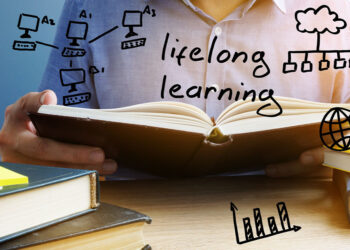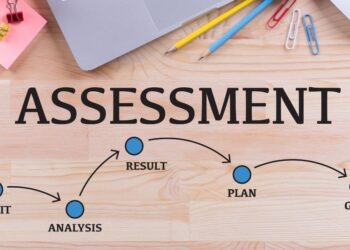From Sounds to Words: The Magic of Phonics in Literacy
Explore how systematic phonics instruction is shaping early literacy outcomes, and what challenges remain in ensuring equitable progress for all students.
1. The Upward Trend in Phonics Proficiency
Recent data from the U.S. highlights a positive trend in early literacy, with an increasing percentage of first-grade students meeting phonics standards. In the academic year 2024/25, 81% of students achieved the expected phonics level, marking a notable rise from 80.9% in the previous year. This consistent improvement underscores the effectiveness of systematic phonics instruction in primary education.
2. Gender Disparities in Literacy
While overall phonics proficiency is on the rise, a persistent gender gap remains a key area of focus. In 2024/25, a significant 84.7% of girls met the phonics standard, compared to 77.5% of boys. This disparity highlights the need for targeted interventions to ensure that all students, regardless of gender, have equal opportunities to succeed in early literacy.
3. Sustaining Early Gains in Later Grades
While early phonics instruction is crucial, the challenge lies in sustaining these gains as students progress through higher grade levels. Despite improvements in early literacy, data indicates that a significant percentage of older students still struggle with reading proficiency. This underscores the importance of continuing evidence-based instruction beyond initial decoding skills to foster long-term literacy success.
Beyond Borders: Crafting Reading Comprehension in Multilingual Settings
Explore how dual language immersion and targeted interventions are shaping literacy and language acquisition in diverse classrooms, fostering both English proficiency and cultural integration.
1. The Power of Dual Language Immersion
Dual language immersion programs are gaining recognition as a powerful tool in multilingual classrooms. By delivering academic content in both English and another language, these programs not only foster English proficiency but also provide crucial support for students’ home languages, creating a richer and more inclusive learning environment.
2. Home Languages as Assets
The importance of maintaining home languages while learning English cannot be overstated. Research indicates that supporting and nurturing a student’s native language skills directly contributes to enhanced overall language acquisition. This approach also promotes cultural integration, helping emergent bilinguals to feel more connected to their heritage and community.
3. Targeted Interventions for Multilingual Learners
Innovative programs like Lexia English are demonstrating significant success in improving key language skills. Through targeted digital interventions, these programs focus on enhancing speaking, listening, and grammar abilities, effectively advancing multilingual learners through various proficiency levels. The impact of these interventions is being felt across thousands of schools in the U.S.
4. Systemic Support for Academic Recovery
States like Rhode Island are leading the way in academic recovery by implementing rigorous curricula specifically designed to meet the needs of multilingual students. Crucially, this approach is coupled with comprehensive professional development for educators, ensuring that teachers are well-equipped to support diverse linguistic backgrounds. This systemic support, extending beyond mere curriculum content, is key to unlocking literacy, from phonics to fluency, in diverse settings.
Language Bridges: Writing Skills that Connect Bilingual Minds
Explore how embracing bilingualism in education can unlock new pathways for academic and professional success, especially for Hispanic students.
1. The Rise of Bilingualism in Education
The growing Hispanic immigrant population in the United States is transforming the educational landscape. This demographic shift presents both unique challenges and exciting opportunities, especially concerning the education of bilingual students. As the number of students who speak both English and Spanish increases, educational institutions are beginning to recognize the potential of leveraging these students’ linguistic abilities.
2. Untapped Potential in Higher Education
While the benefits of bilingual education are well-documented in K-12 settings, many colleges and universities are still not fully capitalizing on the existing bilingual capabilities of their students. Often, these institutions overlook the valuable resource that bilingualism represents for academic and career readiness. Recognizing and nurturing these skills could lead to significant advancements in students’ overall development.
3. Translation as a Bridge
An innovative approach gaining traction involves integrating translation and interpretation training into the curriculum. This method is proving particularly effective in enhancing language skills for both heritage language learners and English language learners. By focusing on translation, educators can create a bridge between English and Spanish writing skills, equipping students with a “fifth skill” essential for navigating our increasingly globalized world.
4. Cultivating Bilingual Writing Skills
The systematic development of bilingual writing skills is crucial for achieving comprehensive literacy, from phonics to fluency, in multilingual classrooms. This approach is not just about language acquisition; it’s about empowering immigrant and minority students to succeed academically and socially. By prioritizing bilingual writing, educators can provide students with the tools they need to thrive in a diverse and interconnected world.
Vocabulary Building as a Superpower in ESL Learning
Explore how vocabulary building acts as a catalyst, boosting fluency, confidence, and lifelong learning skills in ESL students.
1. The Core Role of Vocabulary Expansion
Vocabulary expansion plays a pivotal role in multilingual classrooms, especially in ESL environments. Recent educational strategies emphasize communication- and context-based vocabulary teaching, equipping students with practical language skills for real-world scenarios.
2. Adapting to the Data-Driven World
In an era where data literacy is fundamental, ESL learners must master both everyday language and specialized vocabulary for analyzing trends and interpreting charts. This adaptation prepares them for diverse communication needs across various fields.
3. Embracing Emerging Technologies
The rise of AI and self-service technologies is reshaping ESL education. Textbook creators are developing specialized courses focused on these emerging fields, expanding learners’ interdisciplinary vocabulary and preparing them for future careers.
4. The Transformation of ESL Teaching
ESL teaching in the United States is evolving to integrate interdisciplinary approaches, higher-order thinking, and contextualized language practice. This transformation aims to empower students to actively construct knowledge and solve problems using language.
5. Vocabulary Building as a Breakthrough
Vocabulary building is now seen as an essential component in ESL education, serving as a breakthrough strategy to enhance fluency, boost confidence, and foster lifelong learning capabilities among students.
Engaging Every Sense: Innovative Techniques for Literacy Success
Explore how innovative, multi-sensory techniques are revolutionizing literacy education, especially for multilingual learners in today’s diverse classrooms.
1. Embracing Multimodal Learning
Educators are increasingly turning to multimodal approaches to boost literacy. Think digital storytelling, collaborative projects, and bilingual media—these methods weave students’ native languages into English lessons, creating a richer learning experience where language application and literacy skills grow hand-in-hand.
2. Sensory Engagement in Action
These innovative techniques put all senses to work. Visual aids, auditory cues, and hands-on activities come together to build narrative skills and sharpen logical thinking. Imagine interactive stories that blend personal experiences with native language—a powerful way to engage students deeply.
3. Scaffolding Language Acquisition
Teachers are also using strategies like sentence frames, real-time feedback, and “think-alouds” to guide students through language comprehension and boost their confidence in speaking. These supportive techniques are key to helping multilingual learners grasp and use new language effectively.
4. The Rise of Multi-Sensory Strategies
The trend is clear: multi-sensory, multimodal integration is a game-changer for literacy, especially in multicultural environments. By tapping into various senses and learning styles, educators are paving the way for all students to achieve comprehensive literacy in our digital world, from basic phonics to fluent reading.













